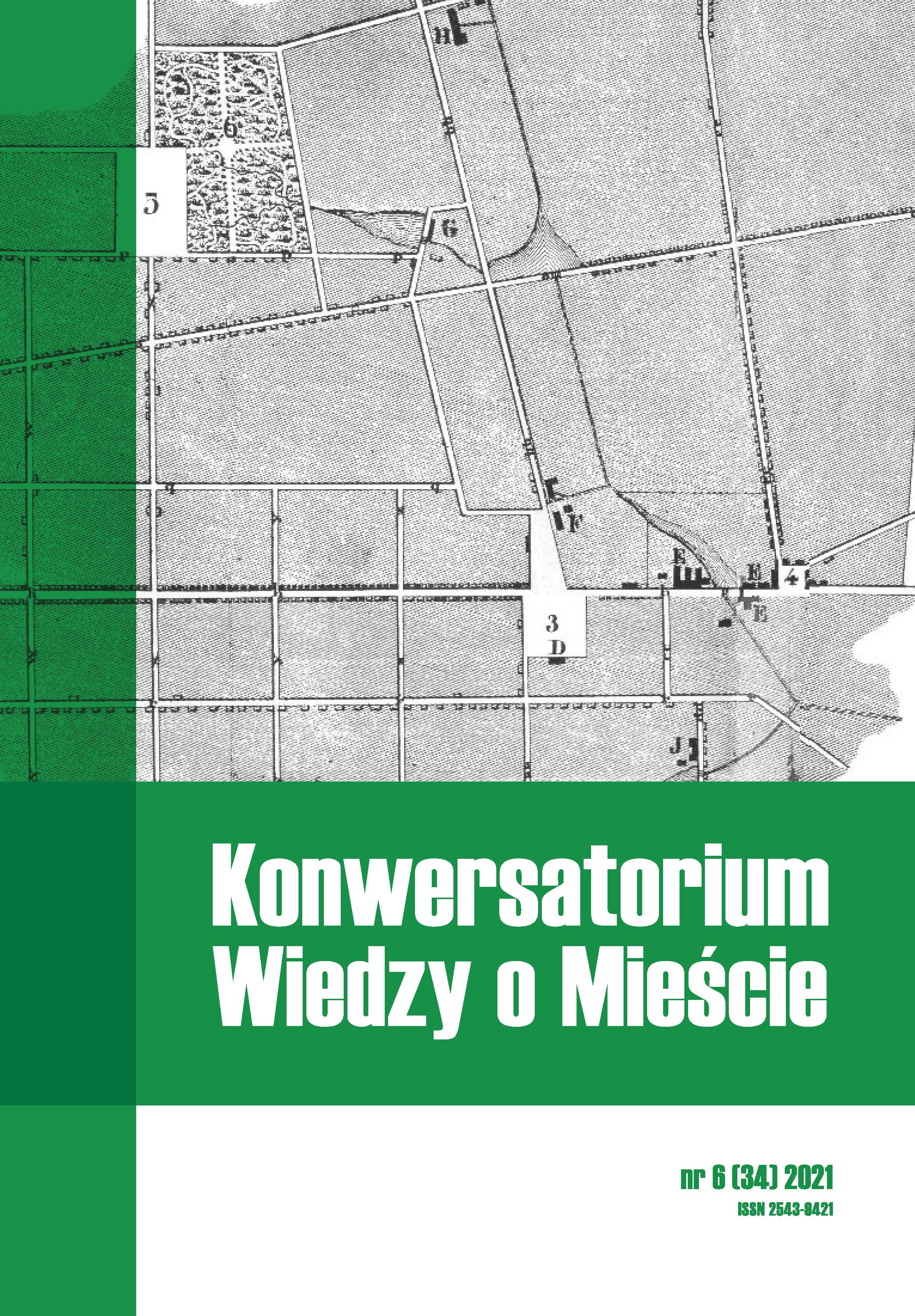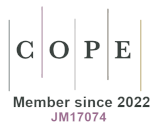Modernist metropolitan neighborhoods in comparison with other forms of housing: Selected examples
DOI:
https://doi.org/10.18778/2543-9421.06.03Keywords:
social circle, urban sociology, socialist modernism, housingAbstract
The article is an attempt to look at post-socialist tower blocks and modernist housing from a contemporary perspective. It takes the context of post-communist Europe as the basis for analysis, citing Sofia as an example. On the basis of the literature and references to the messages of mass culture, it shows the specificity of a metropolitan neighborhood, and leads the reader to a proposal for a conceptualization of ‘neighborhood’ using the notion of a neighborhood circle. The empirical part presents the results of a questionnaire carried out by means of a nationwide online survey and by means of interviews carried out in three Polish locations: Poznań, Warsaw and Wronki. The collected empirical data are described from the point of view of selected themes related to the concept of ‘neighborhood circles’, and analyzed statistically. The recommendations indicate the need to ask further detailed questions and invite discussion, and not only among urban sociologists, on the condition of modernist mass housing from the point of view of building neighborly relations.
References
Abbott, A. (1997). Of time and apace: The contemporary relevance of the Chicago School. Social Forces, 75 (4), 1149–1182. https://doi.org/10.1093/sf/75.4.1149
Google Scholar
DOI: https://doi.org/10.2307/2580667
Baffoe, G. (2019). Understanding the neighbourhood concept and its evolution: A review. Environment and Urbanization ASIA, 10 (2), 393–402. https://doi.org/10.1177/0975425319859115
Google Scholar
DOI: https://doi.org/10.1177/0975425319859115
Barczykowska, A. (2009). Wielkomiejskie zespoły mieszkaniowe jako środowisko życia. Studia Edukacyjne, 10, 129–145.
Google Scholar
Felder, M. (2020). Strong, weak and invisible ties: A relational perspective on urban coexistence. Sociology, 54 (4), 675–692. https://doi.org/10.1177/0038038519895938
Google Scholar
DOI: https://doi.org/10.1177/0038038519895938
Jałowiecki, B. (1991). Wprowadzenie. W: M.S. Szczepański (red.), Rozwój regionalny, rozwój lokalny, samorząd Terytorialny, T. 32: „Miasto socjalistyczne” i świat społeczny jego mieszkańców (s. 5–11). Warszawa: Uniwersytet Warszawski, Europejski Instytut Rozwoju Regionalnego.
Google Scholar
Janiszewska, A., Klima, E., Rochmińska, A. (2011). Jakość życia na łódzkich osiedlach. Space ‒ Society ‒ Economy, 10, 145–179.
Google Scholar
Janiszewska, A., Klima, E., Rochmińska, A. (2013). Poza domem – przestrzeń publiczna mieszkańców blokowisk małych miast. Acta Universitatis Lodziensis. Folia Geographica Socio-Oeconomica, 15, 271–292.
Google Scholar
Kabisch, S., Grossmann, K. (2013). Challenges for large housing estates in light of population decline and ageing: Results of a long-term survey in East Germany. Habitat International, 39, 232–239. https://doi.org/10.1016/j.habitatint.2012.12.003
Google Scholar
DOI: https://doi.org/10.1016/j.habitatint.2012.12.003
Kadushin, Ch. (1976). Networks and circles in the production of culture. American Behavioral Scientist, 19, 769–784.
Google Scholar
DOI: https://doi.org/10.1177/000276427601900607
Kasarda, J.D., Janowitz, M. (1974). Community attachment in mass society. University of Chicago American Sociological Review, 39, 328–339.
Google Scholar
DOI: https://doi.org/10.2307/2094293
Kornai, J. (1980). Economics of shortage. Amsterdam: North Holland.
Google Scholar
Kotus, J. (2006). Changes in the spatial structure of a large Polish city – the case of Poznań. Cities, 23 (5), 364–381. https://doi.org/10.1016/j.cities.2006.02.002
Google Scholar
DOI: https://doi.org/10.1016/j.cities.2006.02.002
Kovacs, Z., Herfert, G. (2012). Development pathways of large housing estates in post-socialist cities: An international comparison. Housing Studies, 27 (3), 324–342. https://doi.org/10.1080/02673037.2012.651105
Google Scholar
DOI: https://doi.org/10.1080/02673037.2012.651105
Kubeš, J. (2013). European post-socialist cities and their near hinterland in intra-urban geography literature. Bulletin of Geography. Socio-economic Series, 19, 19–43. https://doi.org/10.2478/bog-2013-0002
Google Scholar
DOI: https://doi.org/10.2478/bog-2013-0002
Łukasik, M. (2014). Renesans architektury modernizmu jako fenomen społeczny. Politeja, 27, 245–262. https://doi.org/10.12797/Politeja.11.2014.27.12
Google Scholar
DOI: https://doi.org/10.12797/Politeja.11.2014.27.12
Merriman, B. (2015). Three conceptions of spatial locality in Chicago School Sociology (and their significance today). The American Sociologist, 46 (2), 269–287. https://doi.org/10.1007/s12108-014-9239-4
Google Scholar
DOI: https://doi.org/10.1007/s12108-014-9239-4
Nikolić, S. (2019). Pasteloza – refurbishing of the PPR heritage. Urban Development Issues, 63, 51–64. https://doi.org/10.2478/udi-2019-0016
Google Scholar
DOI: https://doi.org/10.2478/udi-2019-0016
Nowak, M. (2021). To, co może nam przypomnieć Szkoła Chicagowska z lat 20. i 30. XX w. Dyskusja na temat uwspólniania założeń geografii społecznej i socjologii miasta. Rozwój Regionalny i Polityka Regionalna, 56, 29–41. https://doi.org/10.14746/rrpr.2021.56s.04
Google Scholar
DOI: https://doi.org/10.14746/rrpr.2021.56s.04
Nowak, M., Pluciński, P., Siatkowski, A. (2019). Neighbourhood circles: The study of urban neighbourhood in contemporary Poland and its basic outcomes. Człowiek i Społeczeństwo, 48, 55–73. https://doi.org/10.14746/cis.2019.48.4
Google Scholar
DOI: https://doi.org/10.14746/cis.2019.48.4
Nowak, M., Siatkowski, A. (2021). The late modernist community in the late socialistic block of flats: The issue of urban neighbourhood vitality in Poland. Journal of Housing and the Built Environment, 37, 101–123. https://doi.org/10.1007/s10901-021-09844-x
Google Scholar
DOI: https://doi.org/10.1007/s10901-021-09844-x
Overcrowding rate by household type – EU-SILC survey (2021). Eurostat. Pobrane z: https://ec.europa.eu/eurostat/databrowser/view/tessi175/default/table?lang=en (25.10.2021).
Google Scholar
Owens, B.R. (2012). Mapping the city: Innovation and continuity in the Chicago School of Sociology, 1920–1934. The American Sociologist, 43, 264–293. https://doi.org/10.1007/s12108-012-9160-7
Google Scholar
DOI: https://doi.org/10.1007/s12108-012-9160-7
Pobłocki, K. (2011). Prawo do miasta i ruralizacja świadomości w powojennej Polsce. W: M. Nowak, P. Pluciński (red.), O miejskiej sferze publicznej. Obywatelskość i konflikty o przestrzeń (s. 129–146). Kraków: Ha!art.
Google Scholar
Raport o sytuacji na rynku nieruchomości mieszkaniowych i komercyjnych w Polsce w 2020 r. (2020). Narodowy Bank Polski. Pobrane z: https://www.nbp.pl/publikacje/rynek_nieruchomosci/raport_2020.pdf (15.02.2020).
Google Scholar
Rącka, I., Palicki, S., Kostev, I. (2015). State and determinants of real estate market development in Central and Eastern European countries on the example of Poland and Bulgaria. Real Estate Management and Valuation, 23 (2), 74–87. https://doi.org/10.1515/remav-2015-0017
Google Scholar
DOI: https://doi.org/10.1515/remav-2015-0017
RESTATE (2021). Pobrane z: http://restate.geo.uu.nl/results/(15.10.2021).
Google Scholar
Smagacz-Poziemska, M. (2017). Badania nad społecznościami lokalnymi i sąsiedztwami w mieście – perspektywa socjologiczna. W: G. Schneider-Skalska, E. Kusińska (red.), Miejskie środowisko mieszkaniowe / Urban housing environment (s. 139–155). Kraków: Politechnika Krakowska.
Google Scholar
Springer, F. (2012). Źle urodzone. Reportaże o architekturze PRL-u. Kraków: Wydawnictwo Karakter.
Google Scholar
Stanilov, K. (2007a). Taking stock of post-socialist urban development: A recapitulation. W: K. Stanilov (red.), The post-socialist city: Urban form and space transformations in Central and Eastern Europe after socialism (s. 3–17). Dordrecht: Springer.
Google Scholar
DOI: https://doi.org/10.1007/978-1-4020-6053-3_1
Stanilov, K. (2007b). Housing trends in Central and Eastern European cities during and after the period of transition. W: K. Stanilov (red.), The post-socialist city: Urban form and space transformations in Central and Eastern Europe after socialism (s. 173–190). Dordrecht: Springer.
Google Scholar
DOI: https://doi.org/10.1007/978-1-4020-6053-3_9
Szafrańska, E. (2015). Ewolucja statusu społecznego i pozycji wielkich osiedli mieszkaniowych w strukturze rezydencjalnej miast postsocjalistycznych. Wybrane przykłady. Acta Universitatis Lodziensis. Folia Sociologica, 52, 45–76.
Google Scholar
Szwaja, K. (1970). Przemiany rodzin robotniczych pochodzenia wiejskiego w wielkim mieście. Maszynopis powielony. Poznań: Archiwum Instytutu Socjologii UAM w Poznaniu.
Google Scholar
Tsenkova, S. (2009). Housing policy reforms in post-socialist Europe: Lost in transition. Monachium: Physica-Verlag. https://doi.org/10.1007/978-3-7908-2115-4
Google Scholar
DOI: https://doi.org/10.1007/978-3-7908-2115-4
Ziółkowski, J. (1964). Osiedle jako system społeczny. Studia Socjologiczne, 2, 183–209.
Google Scholar
Ziółkowski, J. (1965). Urbanizacja, miasto, osiedle. Studia socjologiczne. Warszawa: Państwowe Wydawnictwo Naukowe.
Google Scholar
Znaniecki, F., Ziółkowski, J. (1984). Czym jest dla ciebie miasto Poznań? Dwa konkursy 1928–1964. Warszawa: Państwowe Wydawnictwo Naukowe.
Google Scholar
Downloads
Published
How to Cite
Issue
Section
License

This work is licensed under a Creative Commons Attribution-NonCommercial-NoDerivatives 4.0 International License.









